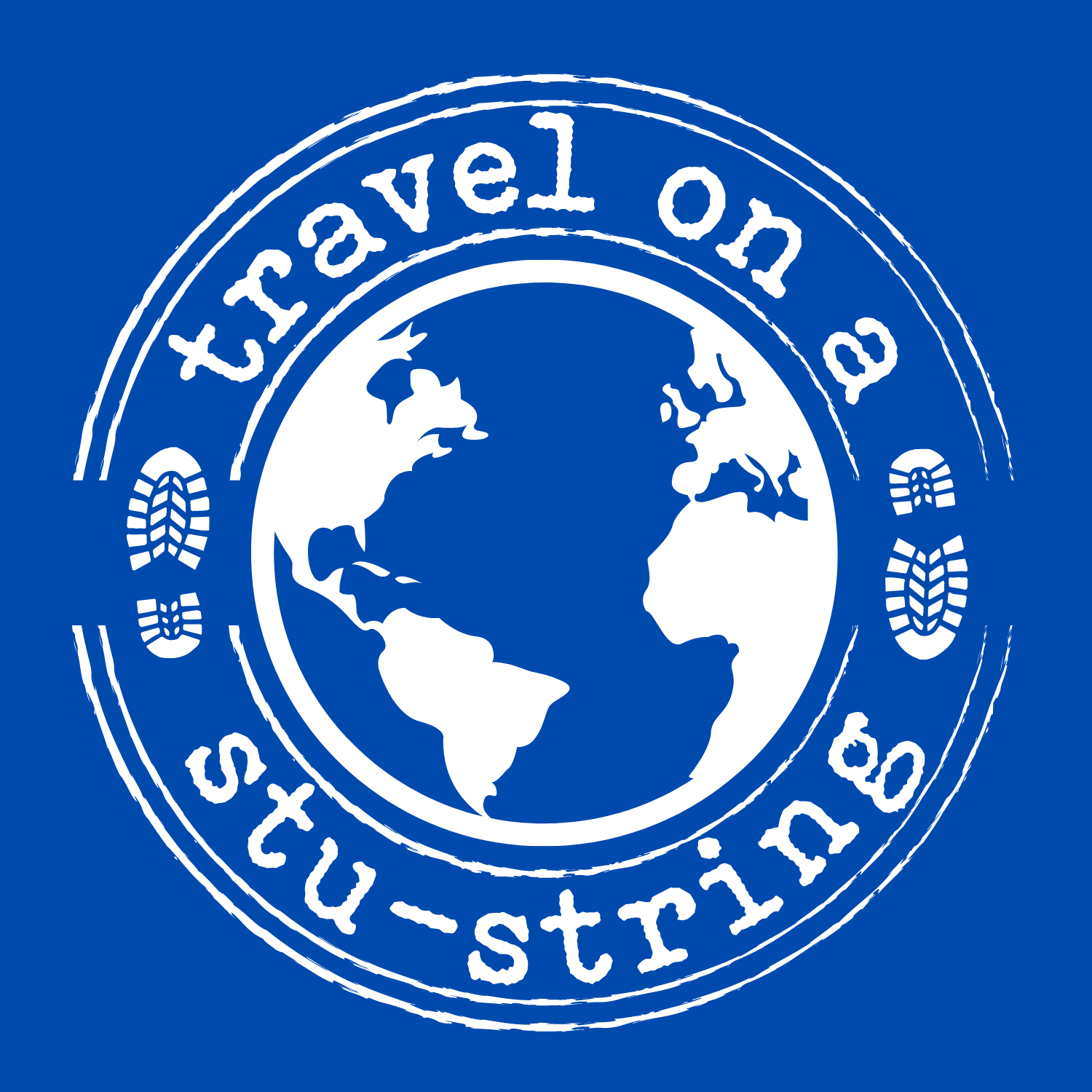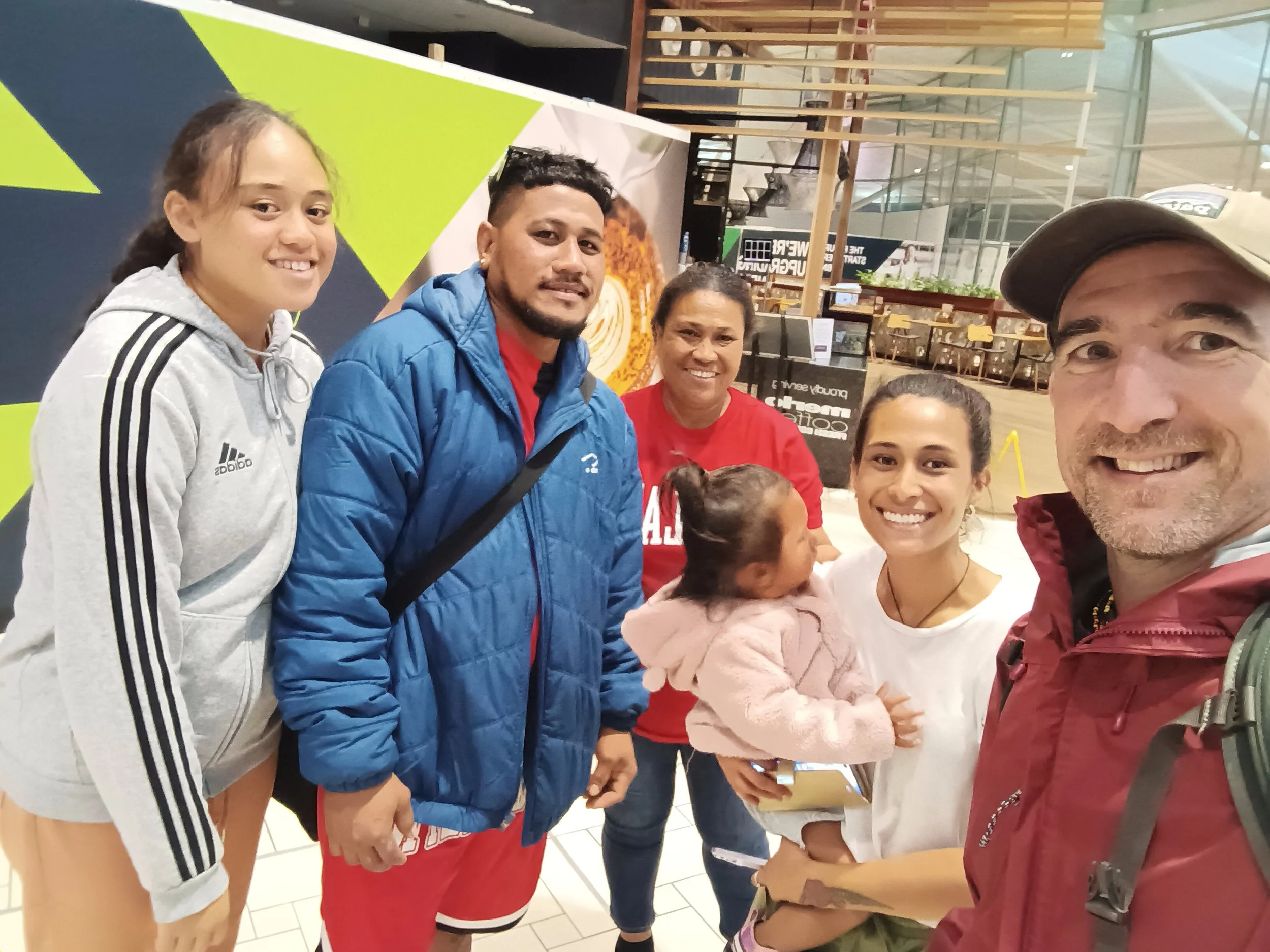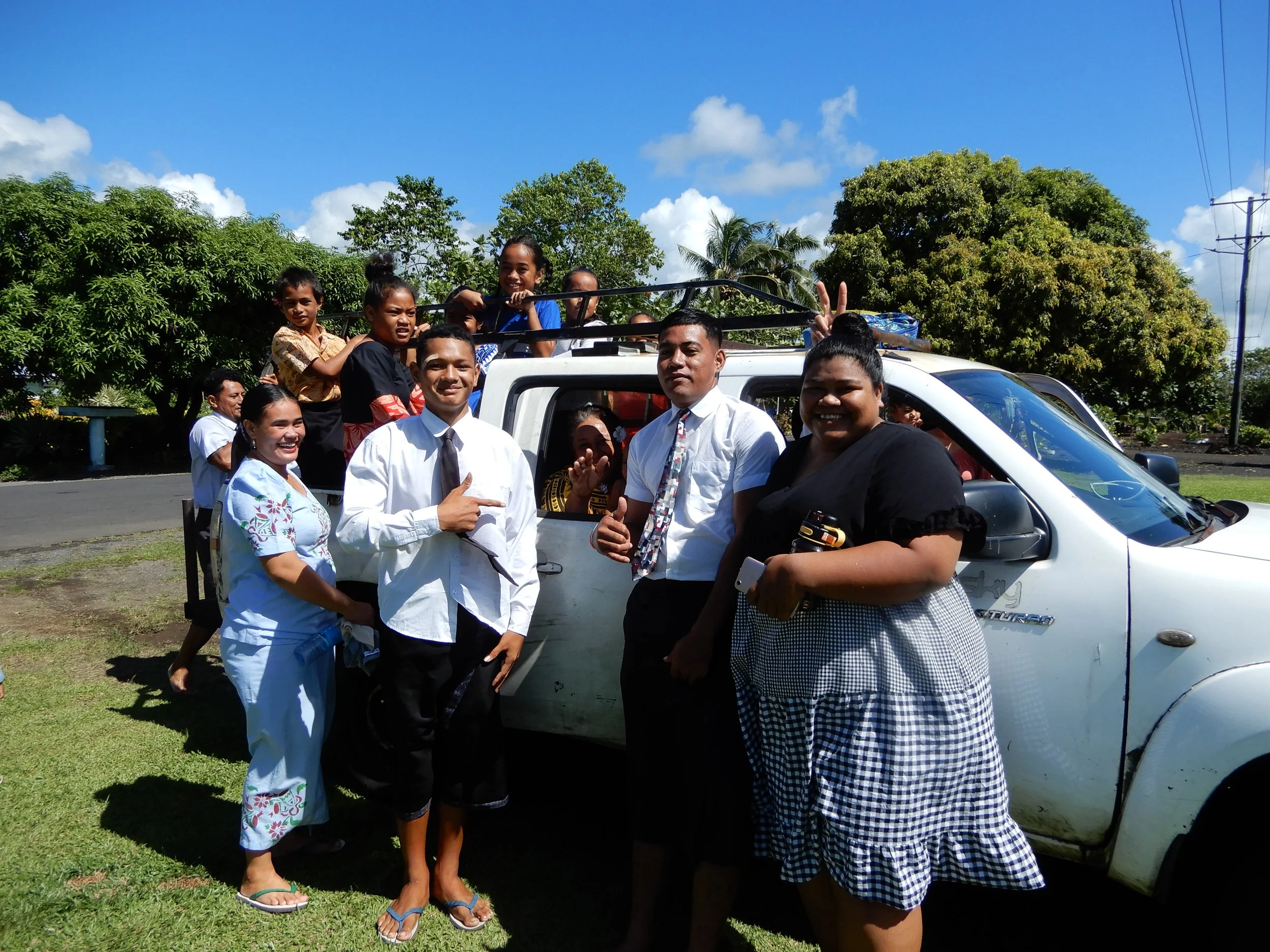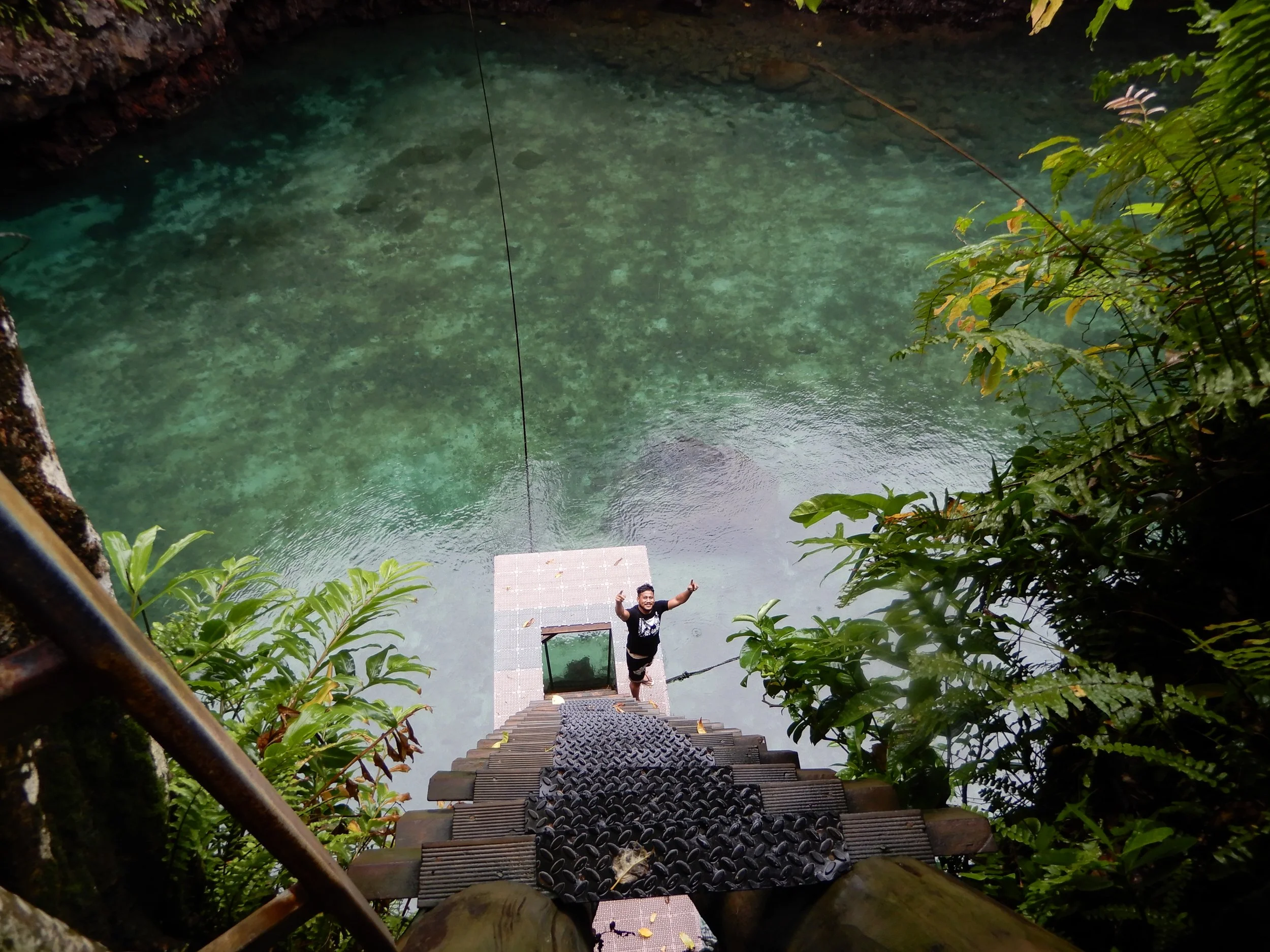In Samoa, Always Say Yes
Always say yes. It is the mantra of self-help gurus, religious zealots, and new age philosophers. Always say yes. Manifest your destiny, they urge. Move closer to God, they implore. Step out of your comfort zone and the routine of your dreary worker day life. Embrace. Challenge. Strive. Always say yes. It could be the subject of a TED talk, or the title of a paperback in an airport bookstore. Always say yes. It could be the catchphrase of a motivational speaker, those overexcited types, wide eyed and brimming with enthusiasm, with perfectly cropped hair and impossibly straight teeth. Repeat after me, they cry, ‘Always say yes!’
‘Excuse me, Mr. O’Brien,’ the air hostess begins, leaning towards the window seat, ‘you are traveling to Samoa, right?’
‘Yes, I am.’
‘Can I ask you a favour?’
‘Sure.’
‘Well, we have a young man on this flight who has been working in Melbourne. He is returning home to Samoa and does not speak much English. Would you be able to help him transfer to the international terminal when we land in Brisbane?’
Always say yes.
‘Sure, I can help him.’
‘That’s great, thank you so much,’ and she points to a young man a few rows back. He is wearing a down jacket over a basketball jersey, prepared for the autumn evening in Melbourne and the raging humidity that awaits us in Apia. His head is nodding to whatever beats are playing through his headphones, and it takes a moment for him to notice the air hostess pointing towards him. When he does, we acknowledge each other with a nod and wave, and he then returns to his music.
When the plane lands, I wait in my row until he has retrieved his bag.
‘I’m Stu,’ I greet him when he reaches me.
‘Miah,’ he says with a broad smile.
To approach travel with an ‘always say yes’ attitude is to embrace a greater unknown than what already awaits. It is to accept invitations and propositions, to welcome opportunities and offers. It is to trust in the kindness of strangers, the hand of fate, and the benevolence of the travel gods. It is, in modern parlance, to embrace vulnerability.
At Brisbane Airport, we walk towards the bus stop for our transfer to the international terminal, making small talk along the way. Miah explains that he was living in Sunshine with some cousins and picking fruit in regional Victoria. He is returning home after six months abroad, before another scheduled trip to Australia later in the year. As we walk through the terminals, we hear the excited calls of female voices.
‘Miah! Miah o iina oe!’ they cry, ‘there you are!’
An elderly lady in jeans and a red t-shirt introduces herself as Miah’s auntie, after she finishes giving her nephew a bear hug and completing a visual assessment of whether he has been eating enough. Her daughters, one with an infant on her hip, offer Miah no respite and also hug him before inquiring about his wellbeing. Miah, in his early 20s, shrugs then away with a teenage embarrassment, assuring them he is ok.
At the international terminal, we learn that the flight to Samoa has been delayed. Miah’s auntie buys everyone dinner, and we spend the evening hearing about his experiences in Australia and filling out my itinerary for Samoa, which now includes an invitation to Lotofaga, Miah’s village on the main island of Upolu. Always say yes.
At Brisbane Airport with Miah and co.
However, before travelling around Upolu, my first destination is the island of Savai’i and specifically Mt Silisili, Samoa’s seldom climbed highest peak. From the port of Saleologa, I hire a scooter and ride to the village of Aopo. The 90 minute drive hugs a stunning coastline, overlooking the magnificent turquoise waters of the Pacific. Villages whizz by, each one with a church at its centre. At times, the road strays away from the shoreline and snakes inland through thick jungle shining effervescent shades of green. Overhead, grey clouds brood, an ominous reminder that the rainy season is not yet over.
In Aopo, I stop at the Lupe Ulu Iva Store and ask about a guide for Mt. Silisili. Eddie, the owner and a village chief, is sitting on a plastic chair at the front of his shop. Dressed in a lavalava and button up shirt, Eddie explains that he can arrange a guide for the following day.
‘Where are you staying tonight?’ he asks.
‘Uh, I don’t know. I have a tent, maybe I can find somewhere around here?’
‘Why don’t you stay here? There’s a spare room in the shop.’
Always say yes.
‘Ok, sure, if it’s no trouble.’
‘No, not at all, stay for as long as you like.’
For the rest of the afternoon, Eddie and I sit outside his shop and chat. We watch cars pass by and he serves customers when they drop in. It is an idyllic life for a man approaching retirement. Eddie’s wife lives in Auckland, though he prefers the quiet village life. He pops the top off another bottle of beer and leans back in his chair, radiating contentment. As the afternoon wanes and the sky turns orange, a man rides past on a motorbike, a suitcase strapped to the rear frame.
‘That man has been banished,’ Eddie begins, ‘he is an adulterer. He was caught having an affair with the wife of another man. We ordered him to pay a fine in the form of pigs, and he has now been banished from Aopo. The deadline for him to leave today was 4:00pm.’
‘Oh, where will he go? How long is he banished for?’
‘He will be ok, he has family in other villages. He is banished for the rest of this year, and then we [the elders] will decide when he can return, but it should be no longer than one year.’ He was, perhaps, someone who should not have said yes.
Sunset in Aopo, Savai’i
After scaling Mt. Silisili, I bid farewell to Eddie and spend the weekend in Manase, lazing in a fale and soaking my scratched up legs in the saltwater. On Sundays in Samoa, there is little to do except attend church. In the village of Pu’apu’a, I stop outside a gleaming white building and on the front, a sign reads ‘The Church of Jesus Christ of Latter Day Saints. Visitors Welcome.’ Following the service, one of the bishops approaches me and invites me for lunch. Always say yes.
At the bishop’s house, a simple concrete structure with more windows than walls, lunch consists of cassava, spam, chicken, and a cocoa drink. With little arable land, root crops and livestock make up a large part of the Samoan diet. Tinned and packet food, imported from Australia and New Zealand, rounds out the food groups. The cassava, white and cut into round chunks, is hard and dry. The spam looks like uncooked mince, and I wash it down with the watery, lukewarm cocoa drink. The chicken, coated in a barbeque sauce, is the only palatable dish. Perhaps, sometimes in Samoa, it is ok to say no.
Happy Mormons in the village of Pu’apu’a
With only two nights remaining in Samoa, I drive to Lotofaga to visit Miah and his family. Most Samoan villages have a similar layout, with a church of some denomination and a general store. At the Lotofaga general store, I show a picture of Miah and I at the Brisbane airport. The boy behind the counter recognises him and instructs his younger brother to take me to his house. Miah’s younger sister speaks the best English of anyone in the family and is, somewhat reluctantly, drafted to the loungeroom to facilitate a discussion with her parents. I recount the story from Brisbane airport, and we make small talk about my travels in Samoa and life in Australia. They invite me to stay the night (always say yes), and in the evening we dine on a buffet of roast bananas, rice, spam, cabbage, and chicken.
Miah at the bottom of To Sua Ocean Trench, Lotofaga, Savai’i
E le falala fua le mu, ae falala one o le matagi, the coconut tree does not sway on its own but is swayed by the wind. This Samoan proverb speaks of things happening for a reason, sometimes unseen and only felt, like the wind. Always saying yes, in Samoa or anywhere, is to embrace chance, risk, and uncertainty. It is a leap of faith, a jump into the unknown. Always saying yes is the wind that moves the coconut trees.





